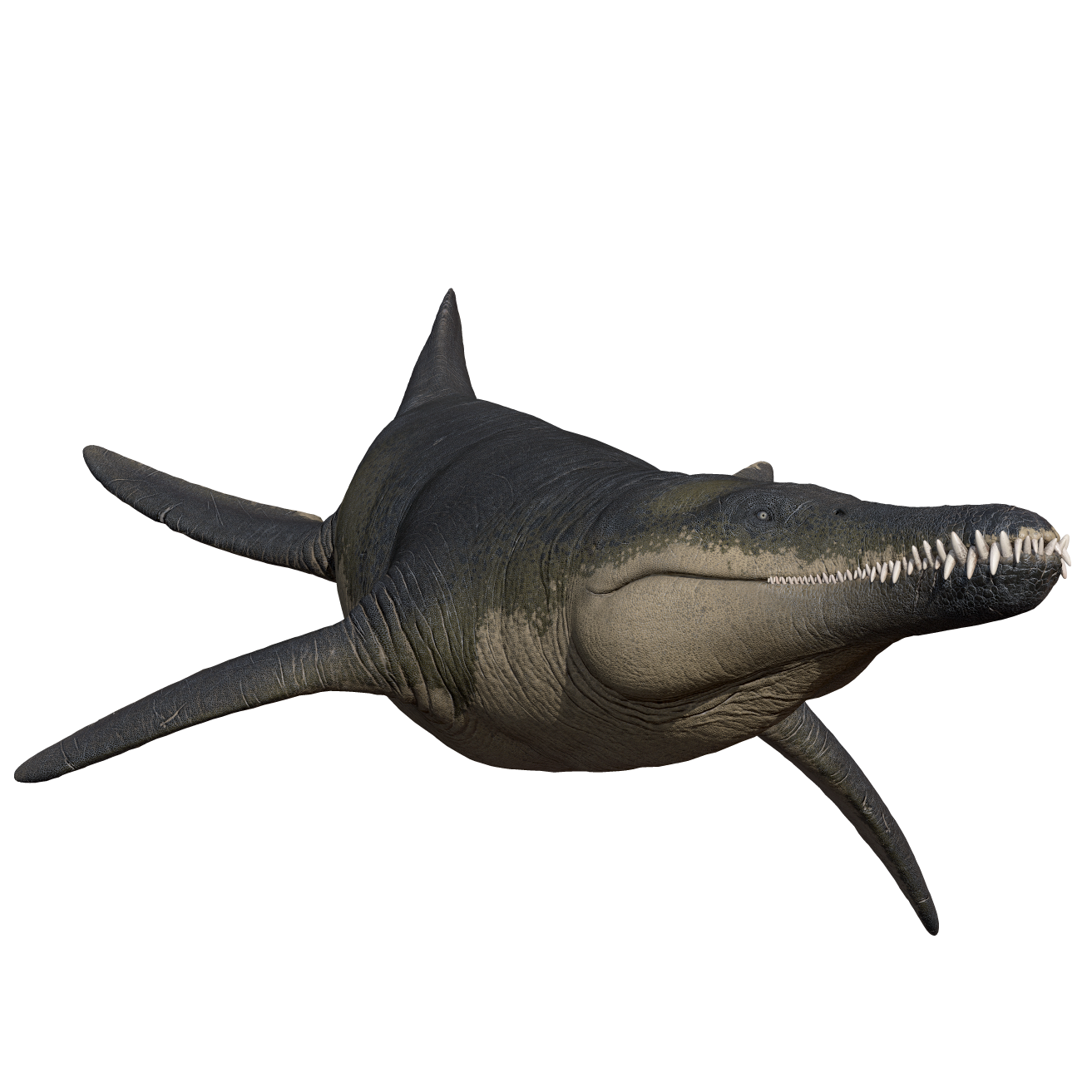The “Devourer” of the Southern Sea
This giant predatory marine reptile was named after the Greek mythological Kronos, "the devourer of the gods", and ruled over the cold, inland Eromanga Sea of Early Cretaceous Australia.
Overview: The top predators of the Early Cretaceous seas were the pliosaurs, and among the largest of these fearsome marine reptiles was Kronosaurus, discovered at the turn of the 20th Century in Queensland, Australia. This apex predator, named after Kronos, the Lord of the Titans in Greek mythology who famously devoured his children, ruled over the cold, inland Eromanga Sea which covered much of Australia; a very different environment from the warm waters that were the habitat of most other known pliosaurs.
Discovery: The holotype (original) specimen of Kronosarus, a partial mandibular symphysis with six teeth, was discovered by Andrew Crombie in 1899 in rocks belonging to the Toolebuc Formation of Queensland, Australia, near the town of Hughenden. Crombie donated the specimen (QM F1609) to the Queensland Museum, and in 1924, Albert Heber Longman, described and named the fossil Kronosaurus queenslandicus, its name meaning “Lizard of Kronos” “from Queensland”. It was named for Kronos, a figure from Greek mythology who was the ruler of the Titans, and who famously devoured his own children, the gods of Olympus. This name was chosen because of Kronosaurus’s imposing size and ferocity.
Since then, additional specimens have been discovered, including a mostly complete skull at the Queensland Museum (QM F18827) and a mostly complete skeleton (MCZ 1285) at Harvard University. However, in recent years, some controversy has arisen over the classification of these specimens and the validity of the name Kronosaurus. This uncertainty stems from the Kronosaurus holotype being incomplete and nondiagnostic. The Harvard specimen has been tentatively renamed Eictus longmani, and all other specimens of Kronosaurus besides the holotype have been referred to Eictus as well. However, most paleontologists disagree with this assessment and suggest instead that a more diagnostic neotype specimen, potentially QM F18827, should be designated to replace the holotype, allowing Kronosaurus to remain valid.
Evolution: Kronosaurus was a type of plesiosaur. The plesiosaurs were a highly successful group of marine reptiles that thrived from the Triassic through Cretaceous, and had barrel-shaped bodies, short tails, four paddle-like flippers, and usually a long neck and small head. Kronosaurus was part of a family of plesiosaurs called Pliosauridae, which became larger than other plesiosaurs and evolved short necks and large heads and jaws. Early pliosaurs, like Attenboroughsaurus from the Early Jurassic had a more classic plesiosaur body plan. They only evolved shorter necks and larger heads/jaws in the Middle Jurassic, perhaps in response to the extinction of large apex predator ichthyosaurs like Temnodotosaurus which ruled the Early Jurassic seas. With these large predators gone, the pliosaurs may have evolved to fill their niche as apex predators, a niche they continued to hold into the Early Cretaceous.
Description: Kronosaurus was no exception to the pliosaur apex predator trend. Reaching lengths of 9-10.9 meters (30-36 ft) and weighing 10.6-12.1 tonnes (11.7-13.3 tons) it was larger than an orca whale and the undisputed ruler of its environment. Its skull was 2.21–2.85 meters (7.3–9.4 ft) long with huge jaws full of large sharp conical teeth. Its teeth can be distinguished from those of its Jurassic relatives Liopleurodon and Pliosaurus in that they lack carinae (cutting edges) and distinct trihedral facets. The first three pairs of Kronosaurus’ maxillary teeth are enlarged as tusk-like fangs, as are three pairs of teeth in the lower jaw, set just in front of the enlarged maxillary teeth. Kronosaurus was a fast and powerful swimmer, making it an even more formidable hunter.
Ecology: Kronosaurus lived in an inland seaway in Australia called the Eromanga Sea which existed during the Early Cretaceous. Unlike the habitats of most other known pliosaurs, Australia lay far south of the equator, and the waters of the Eromanga would have been very cold. Even seasonal ice likely would have been a regular occurrence. Kronosaurus’ presence in these waters demonstrates the adaptability of pliosaurs and their far-reaching control of marine ecosystems across the world. Fossilized stomach contents indicate that Kronosaurus ate mostly other marine reptiles, namely turtles and plesiosaurs, and possibly also cephalopods.
Extinction and Legacy: The Eromanga Sea in which Kronosaurus lived did not last forever. Starting about 104 million years ago, the inland sea began to be filled by sediment that would form the Winton Formation. By the late Albian Age, around 100 million years ago, the sea, along with the animals which inhabited it, had largely disappeared. Kronosaurus was lost to time. Now its fossils can be found in museums including most notably the Queensland Museum in South Brisbane, Queensland, Australia, and the Harvard Museum of Natural History in Cambridge, Massachusetts, USA.
Kronosaurus FAQ
Kronosaurus size / How big was Kronosaurus?
See weight and length.
Kronosaurus weight / How much did Kronosaurus weigh?
Kronosaurus probably weighed around 10.6-12.1 tonnes (11.7-13.3 US tons)!
How long was Kronosaurus?
Kronosaurus was about 9-10.9 meters (30-36 ft) long, even larger than today’s top ocean predator, the Orca!
What did Kronosaurus eat?
Kronosaurus was an apex predator, consuming fish and marine reptiles.
What is Kronosaurus’s closest living relative?
Kronosaurus was a plesiosaur, which in turn were part of the clade Sauropterygia, whose evolutionary relationships are not well-understood, though some analyses suggest turtles may be their closest living relatives.
Kronosaurus family members / Kronosaurus family / What kind of animal was Kronosaurus?
Kronosaurus was a plesiosaur in the family Pliosauridae, typified by their more robust builds compared to most other plesiosaurs, though there are some earlier long-necked species. Within Pliosauridae, Kronosaurus was in the clade Thalassophonea, which includes the large-skulled, short-necked varieties for which Pliosauridae is classically known.
Where did Kronosaurus live? / Where was Kronosaurus found?
Kronosaurus lived in an inland seaway in Australia called the Eromanga Sea. Its fossils have been found in the state of Queensland.
When did Kronosaurus live?
Kronosaurus lived around 120–100 million years ago during the Early Cretaceous Period.
What does Kronosaurus mean? / Kronosaurus name meaning
Kronosaurus means “Lizard of Kronos”, named after the Greek titan Kronos, because of its imposing size and ferocity.

